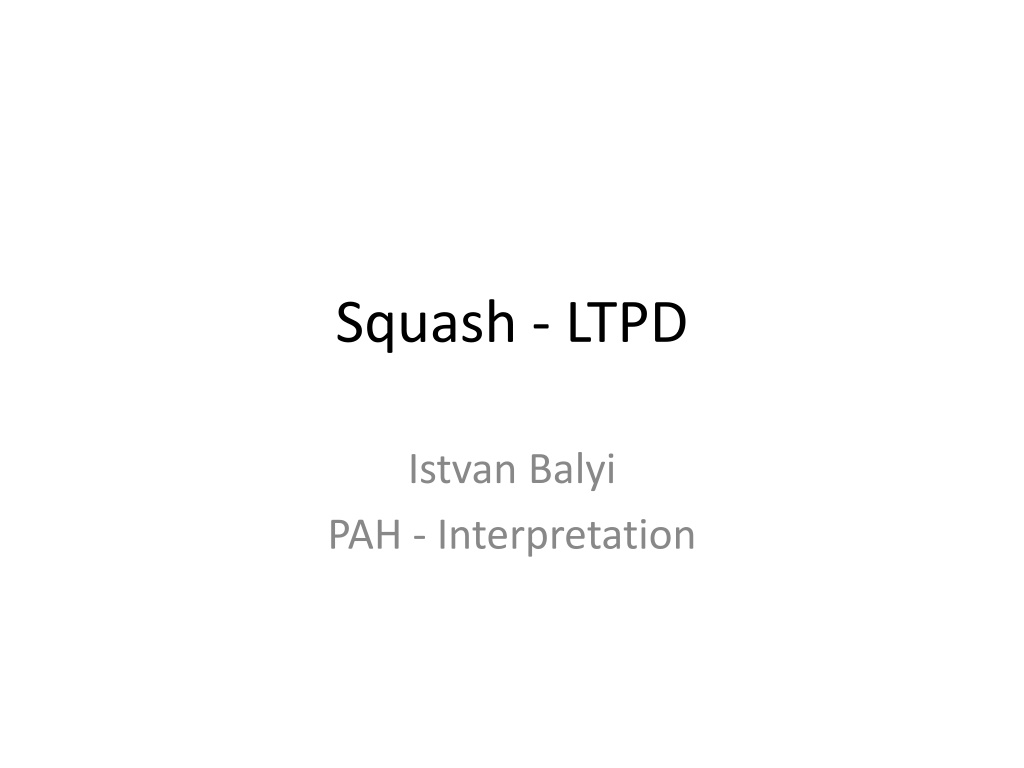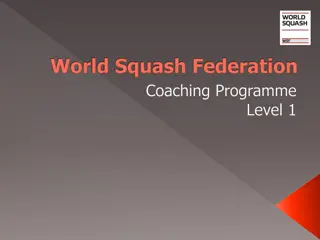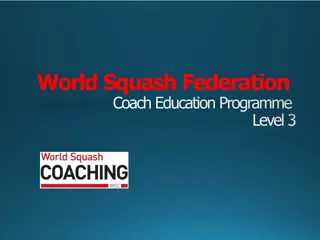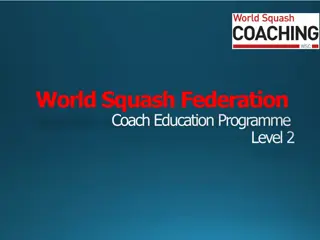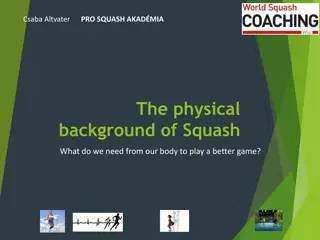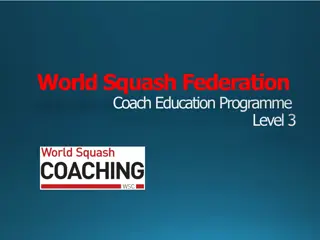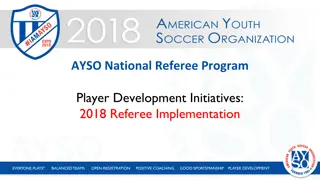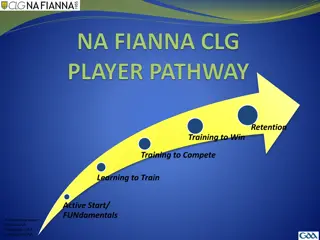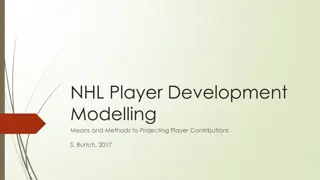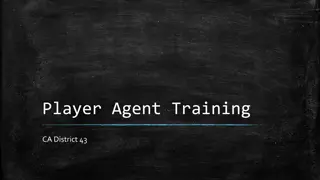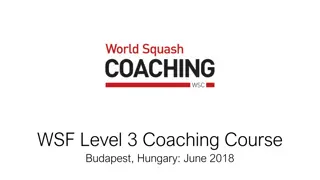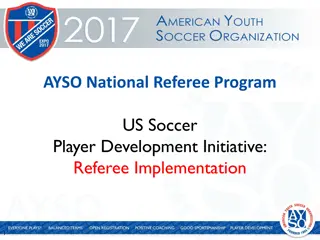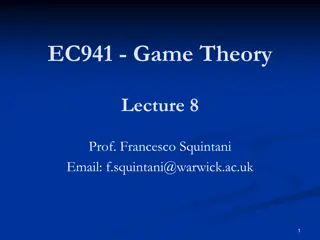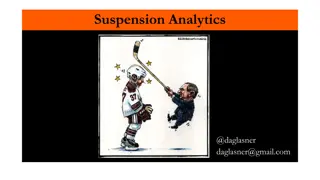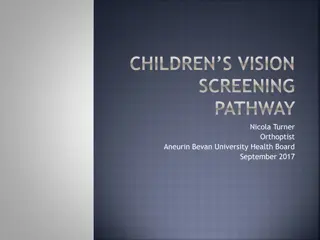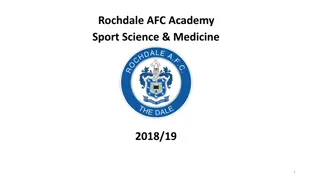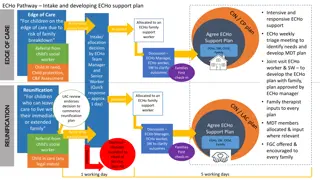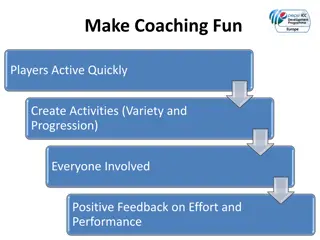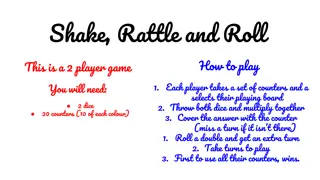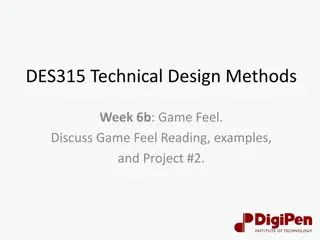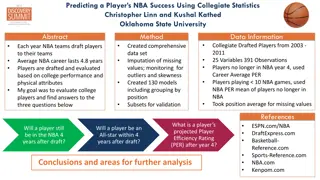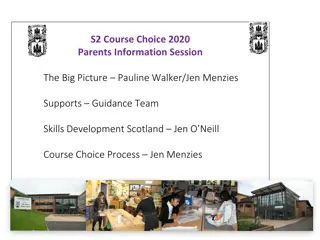Squash Player Development Pathway Overview
Explore the structured Squash Player Development Pathway from Active Start to Training to Win, focusing on skill progression, specialization, and lifelong participation. The pathway emphasizes fundamental movement skills, sport-specific training, and maximizing squash skills at each stage, ultimately leading to high-performance levels.
Download Presentation

Please find below an Image/Link to download the presentation.
The content on the website is provided AS IS for your information and personal use only. It may not be sold, licensed, or shared on other websites without obtaining consent from the author. Download presentation by click this link. If you encounter any issues during the download, it is possible that the publisher has removed the file from their server.
E N D
Presentation Transcript
Squash - LTPD Istvan Balyi PAH - Interpretation
Excellence & Lifelong Wellness Excellence - Reaching full potential Wellness - Lots of people playing Player centred Best interest of the players Suggestion That WSF builds a progressive structure that provides for administration & Coaching to the highest levels to Nurture & Develop squash players Progressive
Active Start 0-6 years Introduction to generic movement/activity in a play situation. Designed to stimulate development in Gross motor skills Brain function Social skills Self esteem
FUNdamentals 6-9 m 6-8 f Basis for most sports skills Designed around Running Jumping Throwing Catching Hitting Kicking Brain function
Learning to Train 9-12m 8-11f Develop FUNdamentals into sports specific skills Structured coaching situations Variety of sports / Open & Closed skill 1 on 1 Direct opposition Squash/Tennis/TT/Badminton/ Style Gymnastics/Diving 1stPast the Post Team Individual etc
Training to Train 12-16m 11-15f Consolidation of Sport Specific skills Moving towards specialisation in one sport Usually where there is a natural aptitude towards one sport Still encouraged to participate at least one other sport
Training to Compete 16-23m 15-21f Specialised in one sport / Squash Maximise their Squash skills / attributes Learning to Rally WWWH/PDA Precise Accuracy Application of Pressure
Training to Win 19+m 18+f Emphasis moves to Maximise Squash skills and attributes of High Performance Squash Reflected in Tactics Fitness Mental strength Lifestyle
Active for Life Any age! Transition from competitive squash to lifelong participation This can occur at any time
Key Factor 1 The 10 Year Rule 10k to 15k hours to reach Elite levels This equates to more than 3 hours daily for 10 years Sorry But there is NO quick fix
Key Factor 2 The FUNdamentals All sports are built on the practical aaplication of Generic Movement Skills ABC s A gility B alance C oordination S peed
Key Factor 3 - Specialisation Early specialisation Gymnastics Figure skating Usually closed skill sports Later specialisation Squash Tennis Football Basketball Usually open skill sports
Key Factor 4 Development Age Everyone passes through the same phases of development from birth to adolescence, although NOT at the same rate The timing and rate of development varies Which is the difference between the chronological age and the development age Two children may be of the same age but at a different development age. The 2 could be up to 5 years difference
Key Factor 5 Trainability Trainability is the developing bodies responsiveness to training at different stages of growth and maturation Certain windows of training opportunity appear at different stages of development During the early stages of adolescence (Growth spurt usually around 12years) girls can start training for strength / speed / stamina (Boys around 14years)
Key Factor 6 Physical/Mental/Cognitive/Emotional Development Coaches need to be sensitive as players grow through adolescence The risk of Burnout is high during this period from Lack of Confidence/Emotional Stress/Anxiety Veteran Juniors
Key Factor 7 - Periodisation Periodisation is a logical, science based programme of training for Competition / Preparation / Physical training / Recovery Which require modification at each phase of growth / maturation / trainability
Key Factor 8 Calendar Planning During the adolescent phase competition should be viewed as and essential learning environment (Not just winning!)in balance with the windows of opportunity for physical and emotional development
Key Factor 9 Integration / Balance Squash (Physical development)should be regarded as integral to overall wellbeing and be in synch with other lifestyle issues such as education / social development etc
Key Factor 10 Continuous Improvement LTPD is based on the scientific study of training linked to what good coaches have been doing for many years Coaches need to constantly respond to new knowledge and levels of understanding
Windows of Training Opportunity Stamina During growth spurt moving to aerobic power as the growth spurt slows down Strength Girls immediately after the growth spurt and during the onset of menarche Boys only have 1 window starting 1 year after growth spurt Speed Girls between 6-8years & 11-13years Boys 7-9years & 13-16years / 1st phase on agility & quickness 2ndphase on anaerobic alactic energy system
Skill (Rally Building Fundamental movement) Girls 8-11y Boys 9-12y Suppleness Girls & Boys 6-10years With special attention during growth spurt Psychology Squash is a mental, physical challenge whilst maintaining high levels of concentration Mental toughness both in competition & training is essential to success in squash and can enhance everyday life
Sustenance Nutrition Hydration Rest Sleep - Regeneration
Schooling Consideration to overall lifestyle
Socio - Cultural Squash can expose players to various forms of interaction Leading to international travel & multi cultural experiences
Training to Compete Competition to Training Ratio 65% Competition(40% events 25% practice matches) Technical Rally building under pressure Technique under pressure Tactical Pattern development & recognition skills Physical Where the skeletal system respond to appropriate loads and direction Psychological Squash specific self talk Visualisation Mental strength / Focus of attention / Concentration Ancillary Nutrition Recovery - Travel
